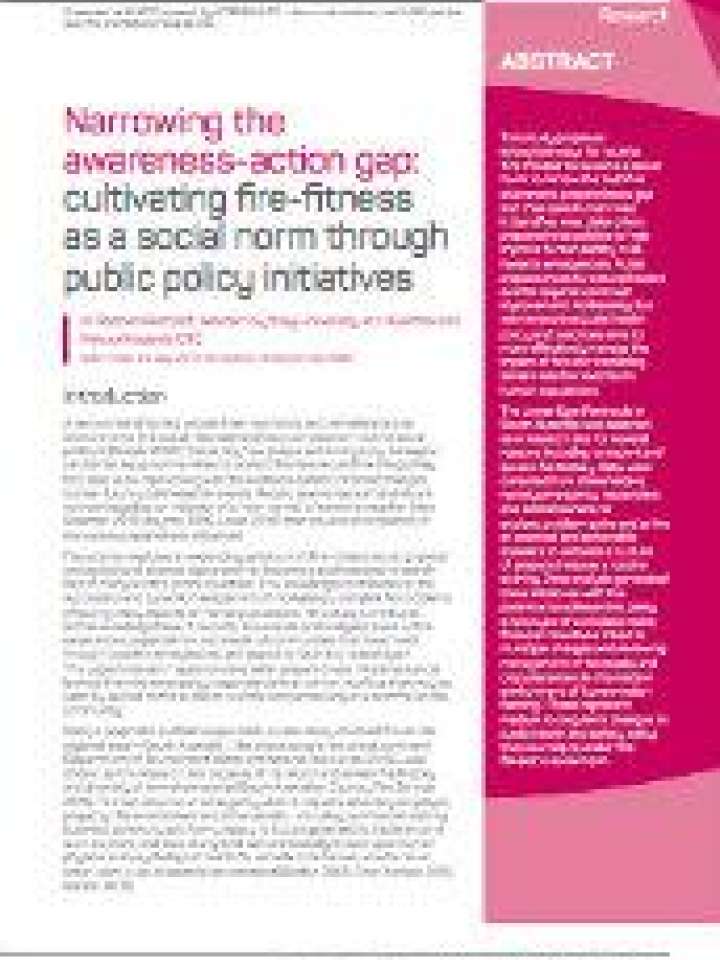Narrowing the awareness-action gap: cultivating fire-fitness as a social norm through public policy initiatives
This study proposes innovative ways for routine 'fire-fitness' to become a social norm to narrow the bushfire awareness-preparedness gap and thus save human lives. It identifies new, data-driven preparedness policies to help improve human safety in all-hazards emergencies. Public preparedness for natural hazard events requires continual improvement. Addressing this with innovative public health policy and practices aims to more effectively manage the impact of fire and worsening severe weather events on human populations.
The Lower Eyre Peninsula in South Australia was selected as a research site for several reasons including its recent and severe fire history. Data were collected from stakeholders, namely emergency responders and animal owners, to explore, problem-solve and arrive at practical and achievable answers to cultivate a culture of preparedness as a routine activity. Data analysis generated three initiatives with the potential to achieve this, being a new type of workplace leave, financial incentives linked to municipal charges and reviewing management of firebreaks and crop placement in the modern environment of 'conservation farming'. These represent medium to long-term changes to public health and safety policy that can help to make 'fire-fitness' a social norm.
Explore further
